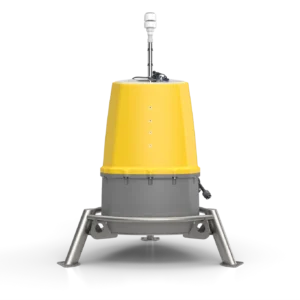Wind speed and direction have traditionally been measured using mechanical methods, such as propellers and rotating cups. With the progression of technology, ultrasonic sensors, and most recently, LIDAR-based sensors, have been introduced and refined to a level that makes them suitable for even the most demanding offshore applications.
WISE Group can deliver all three types of sensors from different manufacturers; however, only those robust enough to survive the harsh conditions offshore will be recommended. We have over 25 years of experience choosing the best models for your application.
We have over 25 years of experience in choosing the best models for your application.
Mechanical wind sensors
We can deliver several mechanical sensors using propellers or rotating cups from different manufacturers. Sensors perform differently at low wind speeds and high wind speeds. Also, wind gust survival and temperature range must be considered when selecting the sensor. Models with ATEX certificates for Ex-installations are available. Don’t hesitate to get in touch with us for details.
Ultrasonic wind sensors
We can recommend several types of ultrasonic sensors from different manufacturers. Ultrasonic sensors have no moving parts or bearings, low maintenance costs, and calibration requirements. These are, therefore, highly recommended for installations on high masts or in inaccessible locations. Models with ATEX certificates for Ex-installations are available.
LIDAR wind sensors
LIDAR (Light Detection and Ranging) wind sensors represent the forefront of wind monitoring technology. As remote sensing instruments, they use pulsed lasers to simultaneously measure wind speed and direction at multiple heights. These unique capabilities make them ideal for tackling complex wind environments and handling large-scale applications.
LIDAR wind sensors offer an array of advantages. With the ability to measure wind conditions over a long range with impressive accuracy, they provide critical data that can optimize wind turbine performance. Moreover, their remote sensing ability allows for non-intrusive measurements, significantly reducing the risk of damage in harsh environments.
Especially useful in offshore applications and extensive wind farms, LIDAR sensors enable a comprehensive understanding of wind profiles across broad areas. This knowledge is crucial to maximize power output and manage the turbines’ life expectancy.
Location – location – location
Many wind sensor users have experienced unexpected measurement problems or corrupted data due to turbulence or obstructions from nearby constructions. Our engineers have long experience spotting such problems and can advise and recommend locations for the best possible measurements.
Interested in Our Advanced Monitoring Solutions?
Our team is ready to assist you in selecting the right sensors and systems for your offshore operations. Complete the form below, and we'll respond promptly. For additional contact options, visit our Contact Us page."
